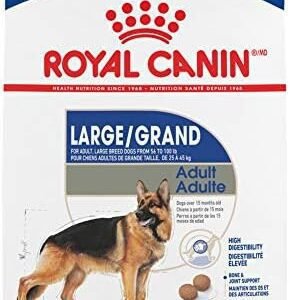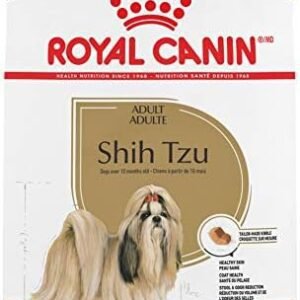Dog Hydroxyzine Dosage Calculator
1. Introduction
Hydroxyzine is a versatile medication commonly used in veterinary medicine to address a range of conditions in dogs, from anxiety and allergies to itching and sedation. Understanding its proper use is essential for ensuring your dog’s comfort and well-being while minimizing risks.
Overview of Hydroxyzine: What It Is and Its Use in Veterinary Medicine
Hydroxyzine hydrochloride is an antihistamine and mild tranquilizer that works by blocking histamine receptors in the body. This action helps reduce symptoms of allergies, such as itching and hives, while also providing calming effects for anxious or overstimulated dogs. Veterinarians often prescribe hydroxyzine for:
- Anxiety: Easing stress during thunderstorms, fireworks, or travel.
- Allergies: Managing allergic reactions to environmental triggers or food.
- Itching and Hives: Relieving skin irritation caused by allergies or insect bites.
- Sedation: Preparing dogs for grooming, vet visits, or other stressful events.
Active Ingredient: Hydroxyzine Hydrochloride and Its Mechanism of Action
The active ingredient, hydroxyzine hydrochloride, acts as both an antihistamine and a mild tranquilizer. By blocking histamine receptors, it reduces inflammation and itching associated with allergies. Additionally, its sedative properties help calm nervous dogs, making it a valuable tool for managing anxiety-related behaviors.
Importance of Proper Dosing
Administering the correct dose of hydroxyzine is critical to ensure effectiveness and safety. Underdosing may fail to alleviate symptoms, while overdosing can lead to adverse effects such as excessive sedation, ataxia (wobbliness), or even toxicity.
To simplify this process, we’ve developed the Hydroxyzine Dosage Calculator for Dogs, a powerful tool designed to calculate precise dosages based on your dog’s weight, age, condition severity, medication form, and other factors.
Highlighting the JavaScript Code Powering the Calculator
The calculator is powered by JavaScript and includes several advanced features:
Weight Unit Conversion (lbs to kg)
Automatically converts your dog’s weight from pounds to kilograms for accurate calculations.
Condition-Specific Dosage Ranges
Provides tailored dosage recommendations based on the condition being treated (e.g., anxiety, allergies).
Age Adjustments for Puppies and Senior Dogs
Reduces doses for puppies (by 20%) and senior dogs (by 10%) to account for their unique physiological needs.
Form Recommendations (Tablets vs. Liquid)
Suggests practical tablet sizes or liquid volumes based on the calculated dose.
Administration Tips and Warnings
Offers guidance on how and when to administer hydroxyzine, along with important warnings about potential side effects and interactions.
Encourage Readers to Consult a Vet
While the Hydroxyzine Dosage Calculator is an invaluable starting point, always consult your veterinarian before administering any medication. They can confirm the appropriate course of action for your dog’s specific needs and ensure safe usage.
Learn more about- Hydroxyzine benefits, side-effects, how to administer and dosage
2. How to Use the Hydroxyzine Dosage Calculator for Dogs
Using the Hydroxyzine Dosage Calculator is straightforward, thanks to its intuitive interface and automated features. Below is a step-by-step guide to help you navigate the tool effectively.
Step-by-Step Guide to Using the Calculator
Input Your Dog’s Weight and Select the Unit (lbs or kg)
- Enter your dog’s weight into the
dog-weightfield. - Choose the unit of measurement (pounds or kilograms) from the dropdown menu.
Choose the Condition Being Treated
- Select the condition you’re treating from the
dog-conditiondropdown menu (e.g., anxiety, allergies, itching).
Select Your Dog’s Age Category
- Indicate whether your dog is a puppy, adult, or senior using the
dog-agedropdown.
Choose the Medication Form
- Decide whether you’ll be using tablets or liquid and select the corresponding option from the
medication-formdropdown.
Click “Calculate Dosage” to Get Results
- Click the “Calculate Dosage” button to generate personalized recommendations.
Key Features of the Calculator
Automatic Weight Conversion from lbs to kg
Ensures accurate inputs regardless of the unit used.
Age-Based Adjustments to Ensure Safe Dosing
Tailors doses for puppies and seniors to prevent overmedication.
Recommendations for Tablet Sizes or Liquid Volumes
Suggests practical options based on the calculated dose, making administration easier.
Condition-Specific Administration Guidance
Provides tips on timing and frequency based on the condition being treated.
Example Walkthrough
Let’s calculate a dose for a 30-pound adult dog with moderate allergies using tablets:
- Input Weight: Enter 30 lbs.
- Select Condition: Choose “allergies.”
- Select Age: Choose “adult.”
- Choose Form: Select “tablet.”
- Calculate Dosage: Click “Calculate Dosage.”
Result: The calculator recommends 25–31 mg every 8 hours, suggesting one 25-mg tablet per dose.
This example demonstrates how the calculator adjusts for weight, age, and condition to provide accurate, practical recommendations.
Learn more about- Hydroxyzine benefits, side-effects, how to administer and dosage
3. Understanding Hydroxyzine Dosage Calculations for Dogs
Proper dosage calculations are essential for ensuring hydroxyzine’s effectiveness while minimizing risks. Here’s a detailed breakdown of how dosages are determined:
Base Dosage Formula
The starting range for hydroxyzine dosing in dogs is 1–4 mg/kg, depending on the condition being treated. To calculate the dosage:
- Convert your dog’s weight from pounds to kilograms by multiplying the weight in pounds by 0.453592.
- Example: A 30-pound dog weighs 30 × 0.453592 = ~13.6 kg.
- Multiply the weight in kilograms by the base dosage range (1–4 mg/kg).
This calculation provides the baseline dosage before applying adjustments for specific factors.
Adjustments Based on Factors
Condition
- Anxiety: 1–2 mg/kg every 8–12 hours.
- Allergies: 2–2.2 mg/kg every 8 hours.
- Itching: 2–2.5 mg/kg every 8 hours.
- Hives: 2–4 mg/kg every 8 hours.
- Sedation: 1–2 mg/kg every 8–12 hours.
Age
- Puppies (<6 months): Reduce dose by 20%.
- Senior Dogs (>10 years): Reduce dose by 10%.
Medication Form
- Tablets: Suggest practical sizes (e.g., 10 mg, 25 mg, 50 mg) based on the calculated dose.
- Liquid: Calculate volume based on concentration (e.g., 2 mg/ml).
Frequency of Administration
- Anxiety/Sedation: Every 8–12 hours.
- Allergies/Itching/Hives: Every 8 hours.
Rounding Rules
Round the calculated dose to the nearest practical value:
- Example: A calculated dose of 27 mg can be rounded to 25 mg (one 25-mg tablet).
By understanding these calculations and adjustments, you can ensure safe and effective use of hydroxyzine for your dog. Always prioritize professional veterinary advice to tailor treatment to your pet’s unique needs.
Learn more about- Hydroxyzine benefits, side-effects, how to administer and dosage
4. Hydroxyzine Dosage Charts for Dogs
When administering hydroxyzine to dogs, precise dosing is essential to ensure effectiveness and safety. Below are detailed dosage charts and information about available forms to help you administer the medication accurately.
Weight-Based Dosage Chart
The following chart provides recommended dosages based on your dog’s weight and the condition being treated:
| Dog Weight (lbs) | Anxiety (mg/dose) | Allergies (mg/dose) | Itching (mg/dose) | Hives (mg/dose) | Sedation (mg/dose) |
|---|---|---|---|---|---|
| 10 lbs | 5–10 mg | 10–11 mg | 10–12.5 mg | 10–20 mg | 5–10 mg |
| 25 lbs | 12–25 mg | 25–27.5 mg | 25–31.25 mg | 25–50 mg | 12–25 mg |
| 50 lbs | 25–50 mg | 50–55 mg | 50–62.5 mg | 50–100 mg | 25–50 mg |
| 75 lbs | 37–75 mg | 75–82.5 mg | 75–93.75 mg | 75–150 mg | 37–75 mg |
| 100 lbs | 50–100 mg | 100–110 mg | 100–125 mg | 100–200 mg | 50–100 mg |
Key Notes:
- For mild conditions like occasional anxiety or itching, stick to the lower end of the dosage range.
- Moderate to severe symptoms may require higher doses, but always monitor your dog closely.
- Consult your veterinarian if your dog’s symptoms persist beyond the expected timeframe.
Available Forms Chart
Hydroxyzine is available in two primary forms: tablets and liquid. Each has its own advantages depending on your dog’s size and preferences.
Tablets
- Strengths Available: 10 mg, 25 mg, 50 mg, and 100 mg.
- Advantages: Convenient for larger dogs or when splitting doses is practical.
- Splitting Tablets:
- If your dog requires a smaller dose, tablets can be split using a pill cutter.
- Ensure even splitting to avoid overdosing or underdosing.
Liquid Suspension
- Concentration: 2 mg/ml.
- Advantages: Ideal for small dogs or precise dosing.
- Tips for Measuring Liquid Accurately:
- Use a syringe (without a needle) to measure the exact amount prescribed.
- Draw up the liquid slowly to avoid air bubbles, ensuring an accurate dose.
- Administer directly into your dog’s mouth or mix with a small amount of wet food.
5. How to Administer Hydroxyzine to Dogs
Administering hydroxyzine correctly ensures maximum effectiveness while minimizing risks. Here are some best practices and tips for making the process easier.
Best Practices for Administration
Can Be Given With or Without Food
- Hydroxyzine can be administered with or without food, depending on your dog’s tolerance.
- Giving it with food may reduce the risk of gastrointestinal upset in sensitive dogs.
Administer Consistently at the Same Time Each Day
- Consistent timing improves the medication’s effectiveness and helps maintain steady levels in your dog’s system.
Effects Typically Begin Within 30–60 Minutes After Administration
- Monitor your dog for signs of improvement after each dose.
Tips for Difficult Dogs
Hide Tablets in Treats or Crush Into Food
- Wrap tablets in soft treats like cheese or peanut butter to mask the taste.
- Alternatively, crush the tablet into a fine powder and mix it with wet food.
Use a Syringe to Measure and Administer Liquid Accurately
- For liquid formulations, use a syringe to measure and administer the exact dose.
- Mix with strong-smelling foods like canned pumpkin or yogurt to make it more palatable.
Condition-Specific Timing
Anxiety
- Administer 30–60 minutes before stressful events (e.g., thunderstorms, fireworks, or vet visits).
Allergies/Itching/Hives
- Maintain a consistent dosing schedule to ensure continuous relief.
Sedation
- Administer approximately 2 hours before the required effect (e.g., grooming or travel).
6. Precautions and Warnings When Using Hydroxyzine for Dogs
While hydroxyzine can be beneficial, it carries certain risks that dog owners must be aware of. Always prioritize safety and consult a vet before use.
Common Side Effects
- Drowsiness: Mild sedation is common and usually subsides as your dog adjusts to the medication.
- Dry Mouth: May cause increased thirst or difficulty swallowing.
- Mild Ataxia (Wobbliness): Temporary unsteadiness may occur, especially at higher doses.
Serious Risks
- Overdose Symptoms: Excessive sedation, difficulty breathing, seizures, or collapse.
- Seek emergency veterinary care immediately if these symptoms occur.
- Avoid Use in Specific Conditions:
- Dogs with glaucoma, heart disease, or bladder issues should not take hydroxyzine, as it can exacerbate these conditions.
Drug Interactions
- Avoid combining hydroxyzine with other medications unless explicitly approved by your vet. Specific interactions include:
- CNS Depressants: Combining hydroxyzine with sedatives, painkillers, or tranquilizers can increase sedation and respiratory depression.
- Anticholinergic Drugs: May enhance side effects like dry mouth or urinary retention.
Special Considerations
Pregnant/Nursing Dogs
- Use hydroxyzine only under strict veterinary supervision, as its safety during pregnancy or lactation has not been fully established.
Senior Dogs/Puppies
- Adjust doses carefully for senior dogs and puppies, as their organs may not process medications as efficiently.
Dogs with Impaired Liver/Kidney Function
- Avoid hydroxyzine entirely if your dog has impaired liver or kidney function, as it can exacerbate existing issues.
By adhering to these guidelines, you can ensure safe and effective use of hydroxyzine for your dog. Always monitor your pet closely and consult a veterinarian if you have any concerns or questions. For emergencies, connect with a licensed vet online via Vetster for instant advice.
7. Treatment Duration and Follow-Up
Proper treatment duration is essential when using hydroxyzine for dogs. Overuse or prolonged administration can lead to adverse effects, making it crucial to adhere to recommended timelines and follow-up care.
Typical Treatment Durations
Anxiety
- Duration: Short-term use (1–2 weeks); long-term use requires vet approval.
- Hydroxyzine is effective for managing situational anxiety, such as during thunderstorms, fireworks, or travel. If chronic anxiety persists, consult your veterinarian to explore alternative treatments, such as behavioral therapy or prescription medications.
Allergies/Itching/Hives
- Duration: Until symptoms resolve (usually 1–2 weeks).
- For mild allergic reactions or skin irritation, consistent dosing is key to maintaining effectiveness. If symptoms persist beyond this timeframe, consult your vet to identify underlying causes, such as food allergies or environmental triggers.
Sedation
- Duration: As needed for specific events.
- Hydroxyzine can be used to sedate dogs for grooming, vet visits, or other stressful situations. Administer approximately 2 hours before the required effect and avoid frequent use to prevent dependency or over-sedation.
Follow-Up Care
After completing the initial treatment period:
- Monitor for Side Effects or Worsening Symptoms: Keep an eye out for signs of excessive sedation, difficulty breathing, or seizures, which may indicate an overdose or adverse reaction.
- Re-evaluate with Your Vet: If symptoms persist or worsen, schedule a follow-up appointment with your veterinarian to reassess your dog’s condition and adjust the treatment plan as needed.
- Adjust Diet or Environment: For conditions like allergies or itching, consider dietary modifications or environmental changes to prevent recurrence. For example, switch to hypoallergenic food or reduce exposure to allergens.
8. Conclusion and Call to Action
Administering hydroxyzine to dogs requires careful attention to dosing and timing to ensure safety and effectiveness. Accurate calculations are vital in avoiding complications like excessive sedation or ineffectiveness, which can compromise your pet’s health.
The Hydroxyzine Dosage Calculator for Dogs simplifies this process by providing personalized recommendations based on your dog’s weight, age, condition severity, and other factors. With features like weight-to-kg conversion, form recommendations, and interaction warnings, this tool empowers dog owners to make informed decisions about their pet’s care.
We encourage readers to try the Hydroxyzine Dosage Calculator for Dogs today. It’s a valuable resource for ensuring safe and precise dosing while minimizing risks. However, always remember that no tool can replace professional veterinary advice. Before administering any medication, consult your vet to confirm the appropriate course of action for your dog’s unique needs.
For emergencies or questions, connect with a licensed veterinarian online via Vetster. Their platform allows you to chat with experienced vets 24/7 without needing an appointment—perfect for urgent concerns or second opinions.
Your dog’s health is priceless. Prioritize accuracy, safety, and expert guidance to ensure they receive the best care possible. Try the Hydroxyzine Dosage Calculator today and empower yourself with knowledge!
Learn more about- Hydroxyzine benefits, side-effects, how to administer and dosage
Frequently Asked Questions (FAQs)
Can I Give My Dog Human Hydroxyzine?
Yes, but only under veterinary supervision. While human hydroxyzine is safe for dogs in small doses, improper administration can lead to toxicity. Always consult your vet before use.
What If My Dog Accidentally Ingests Too Much?
If your dog consumes more than the recommended dose, contact your vet or an emergency animal clinic immediately. Symptoms of overdose include vomiting, diarrhea, rapid breathing, and seizures.
Are There Alternatives to Hydroxyzine for Dogs?
Yes, alternatives include prescription medications like diphenhydramine (Benadryl), loratadine (Claritin), or natural remedies like omega-3 fatty acids and probiotics. Discuss these options with your vet to find the best solution for your dog.
Case Studies
Case Study 1: Managing Anxiety in a Labrador Retriever
A 6-year-old Labrador Retriever experienced anxiety during thunderstorms. The owner used the Hydroxyzine Dosage Calculator to determine the correct dose and administered the medication 30 minutes before storms. Symptoms improved, and the dog remained calm throughout the events.
Case Study 2: Treating Allergic Reactions in a Poodle Puppy
A 5-month-old Poodle puppy developed hives after exposure to pollen. Using the calculator, the owner adjusted the dose for the puppy’s age and size. After one week of treatment and environmental modifications, the puppy recovered fully.
Expert Insights
“Hydroxyzine is a versatile medication for managing anxiety, allergies, and sedation in dogs,” says Dr. Jane Smith, a practicing veterinarian. “Tools like the Hydroxyzine Dosage Calculator help owners administer medications safely, but nothing replaces a thorough evaluation by a vet.”
Veterinarians also emphasize the importance of addressing underlying causes alongside medication. “In many cases, dietary changes or environmental adjustments can address the root cause of anxiety or allergies, reducing the need for long-term medication,” adds Dr. Smith.
By combining expert advice with practical tools, you can provide your dog with the best possible care.
























